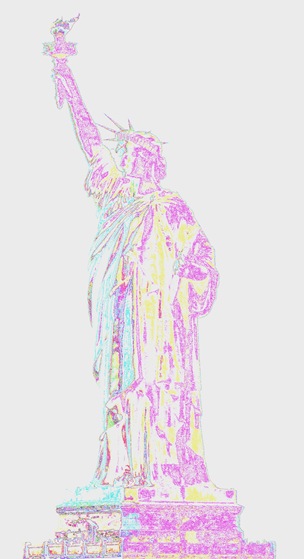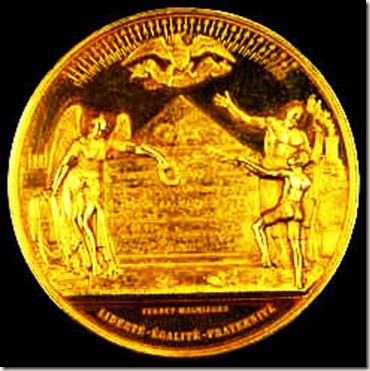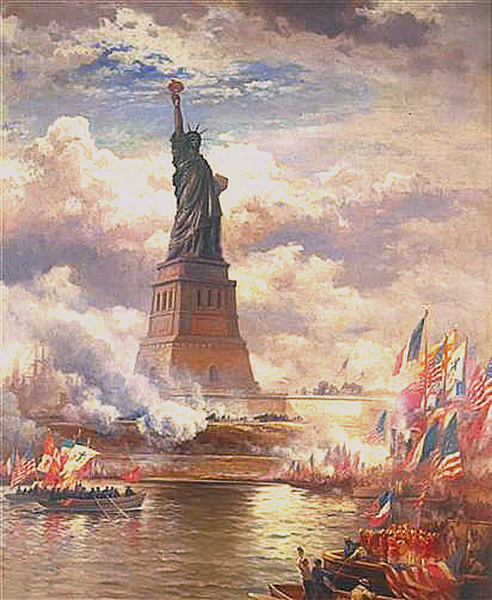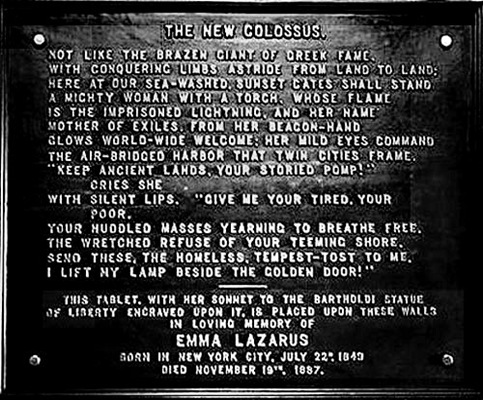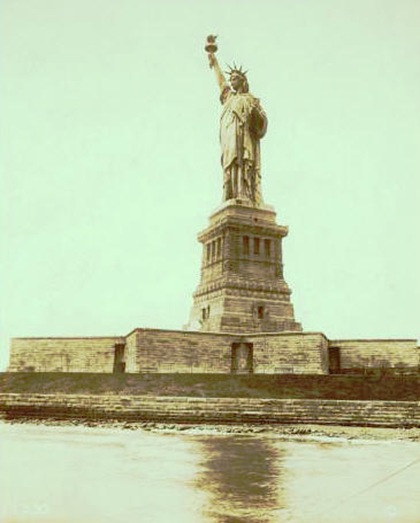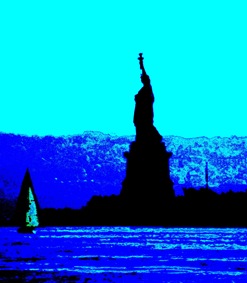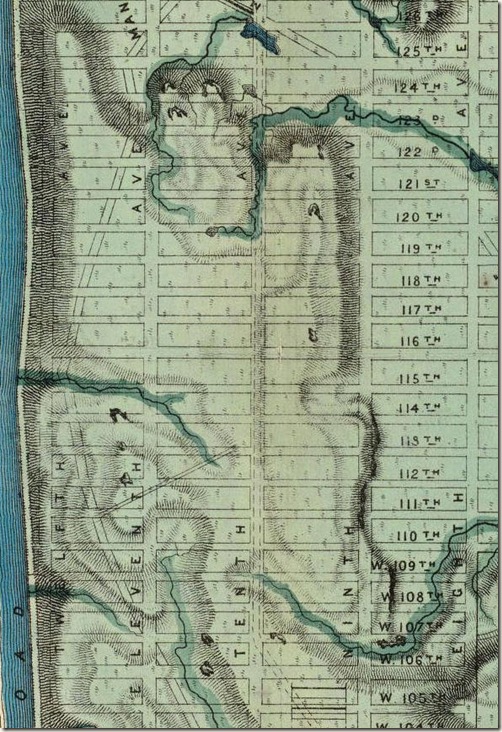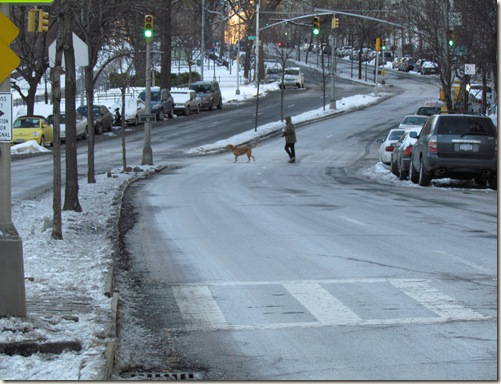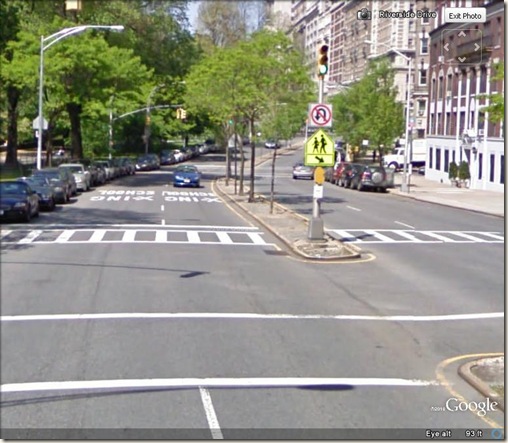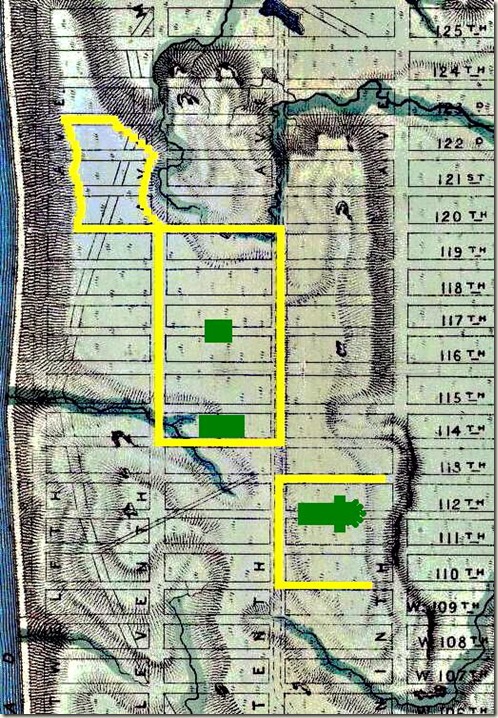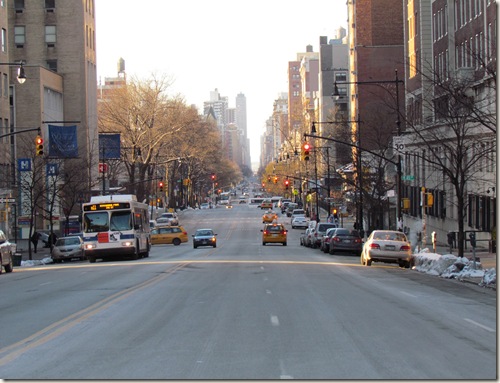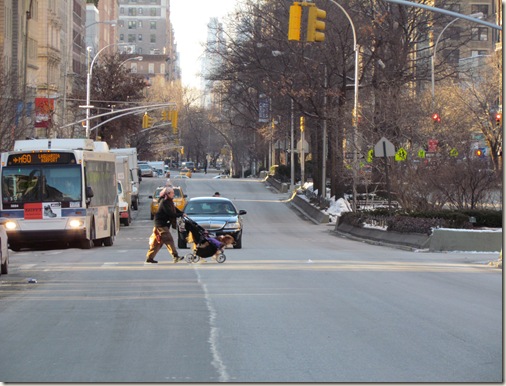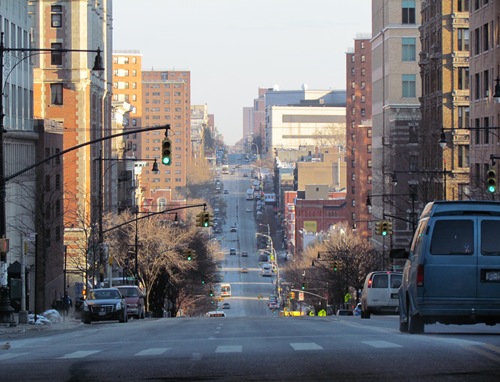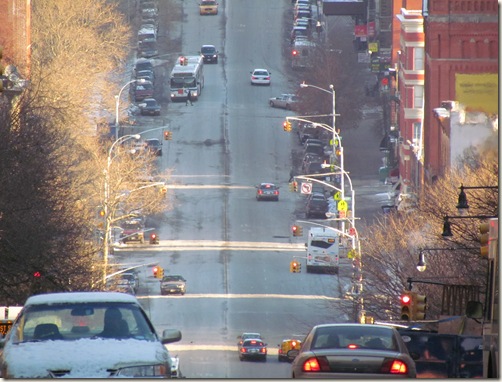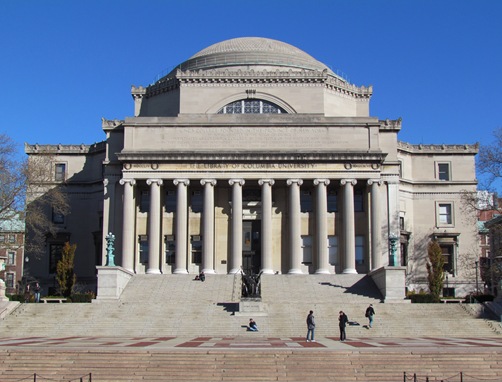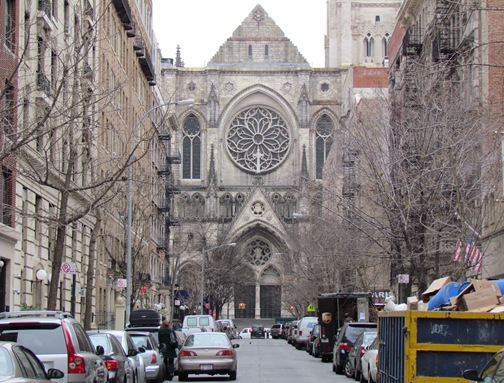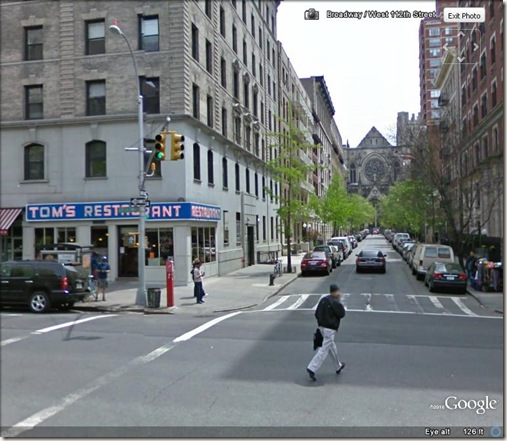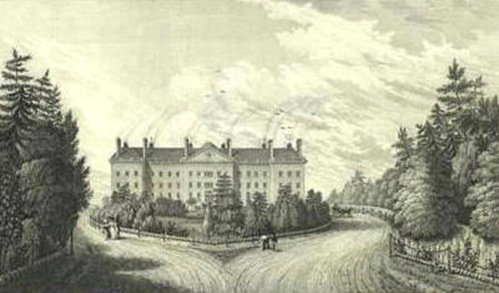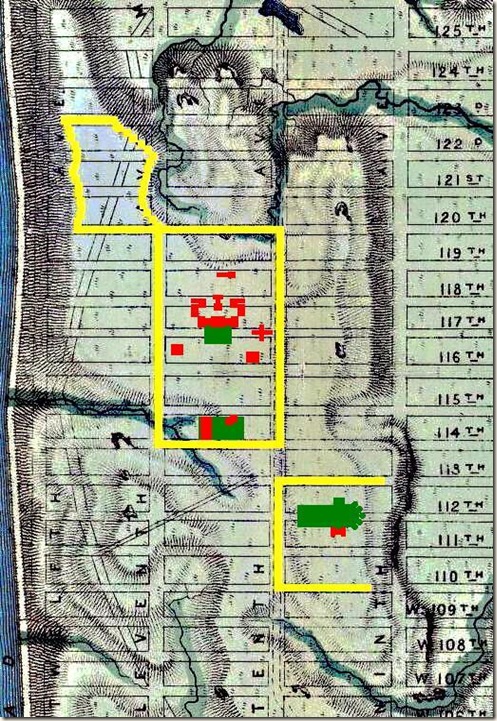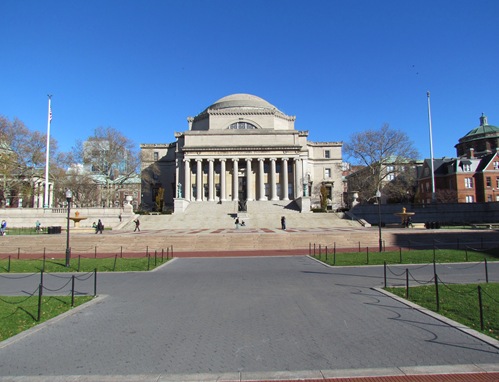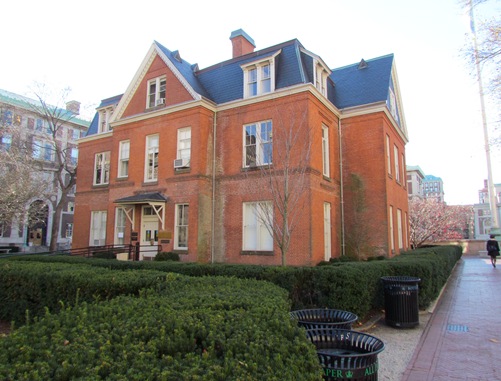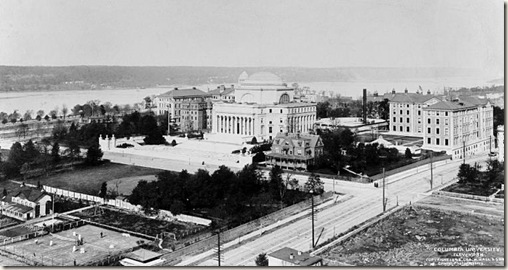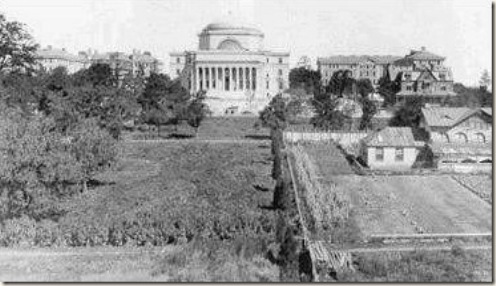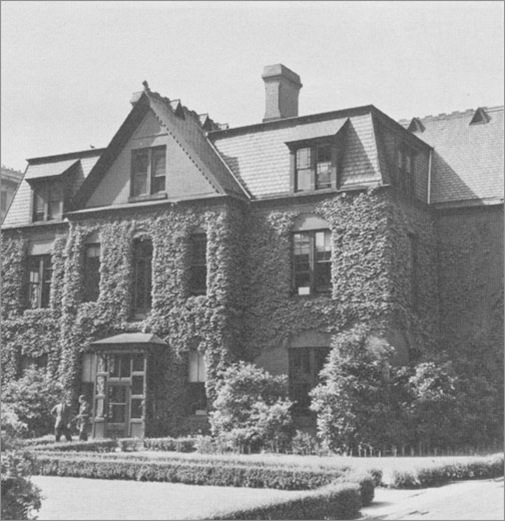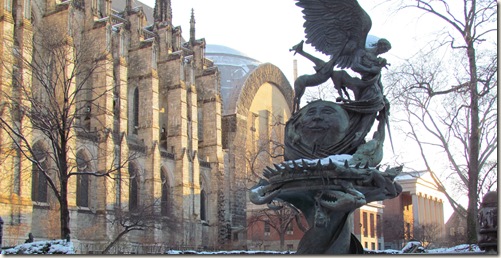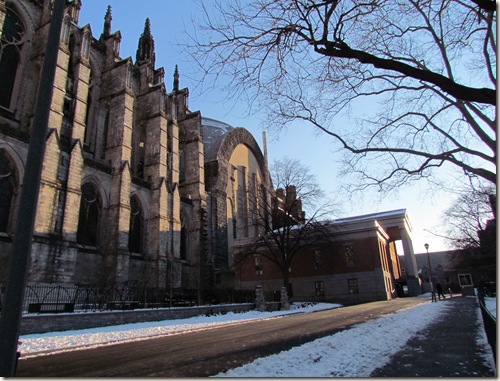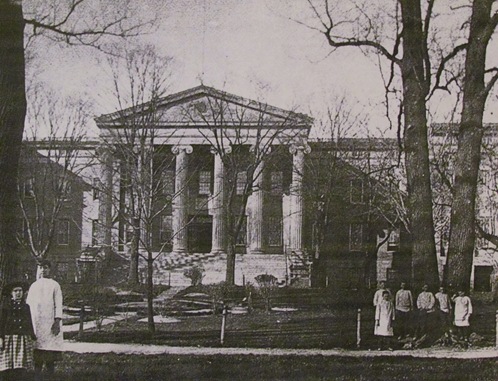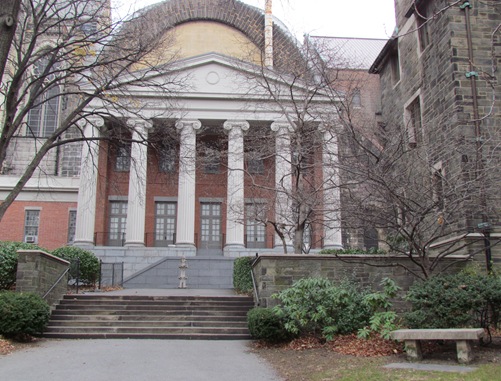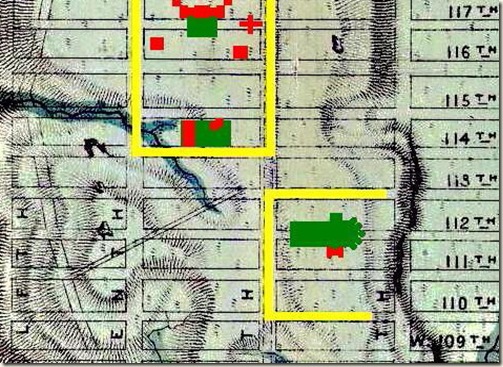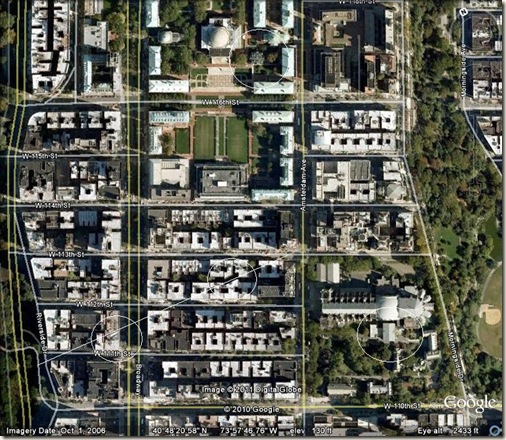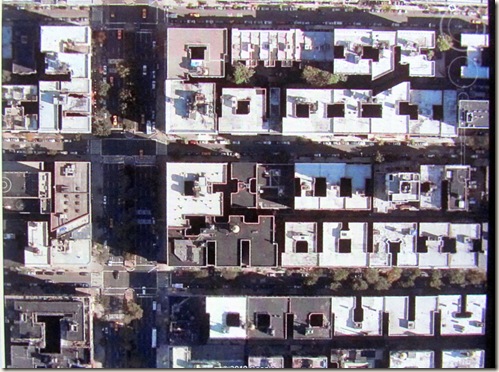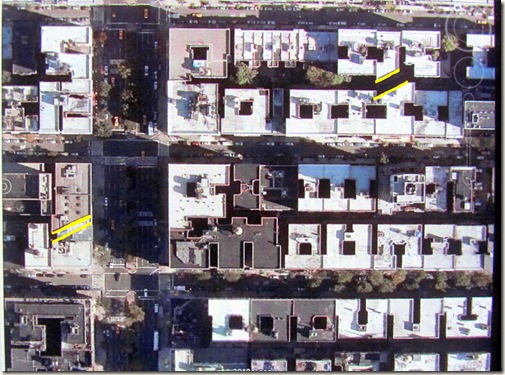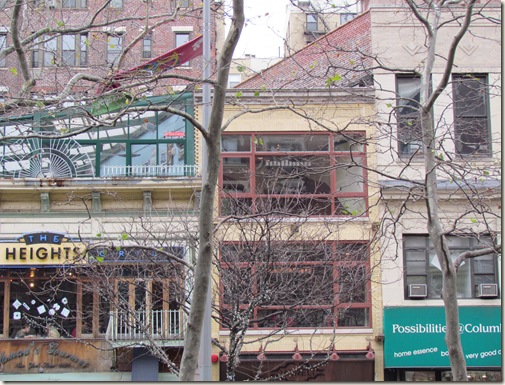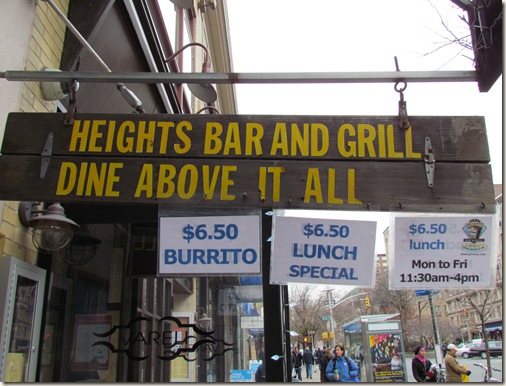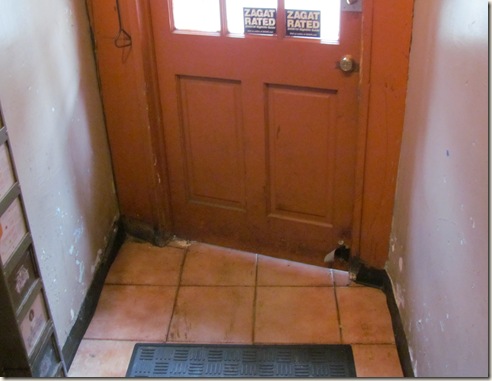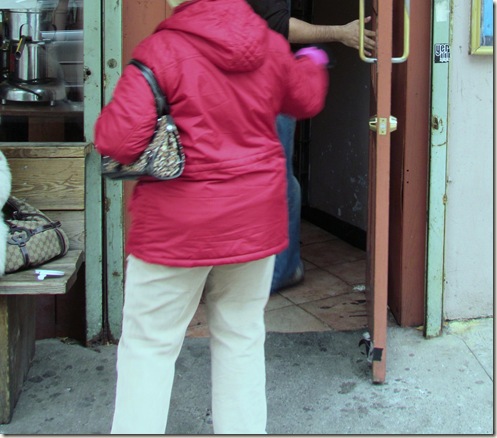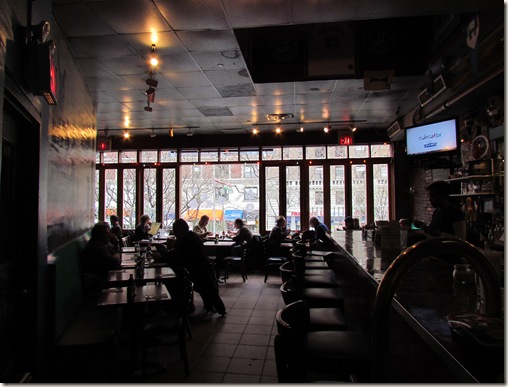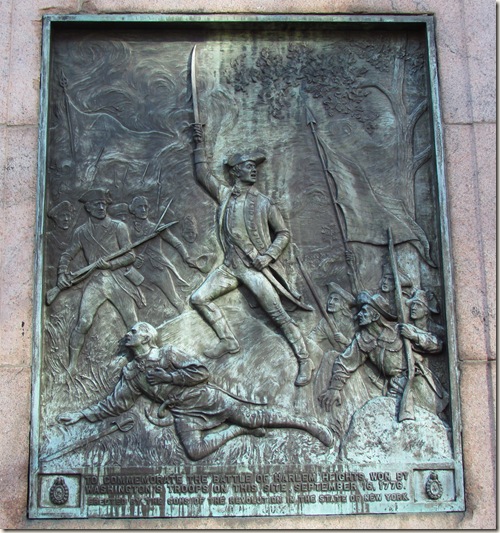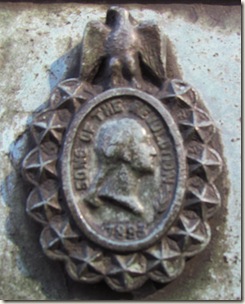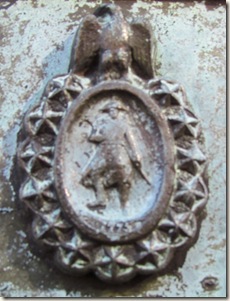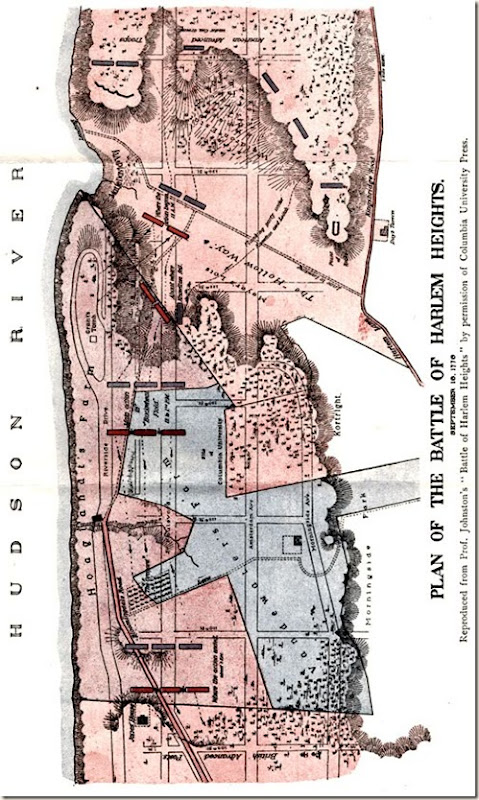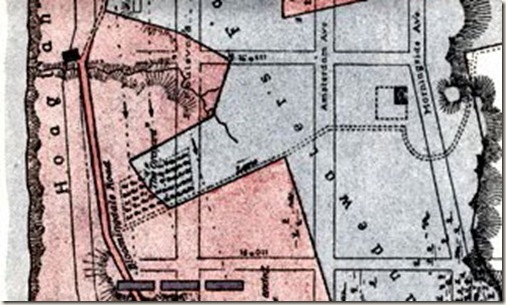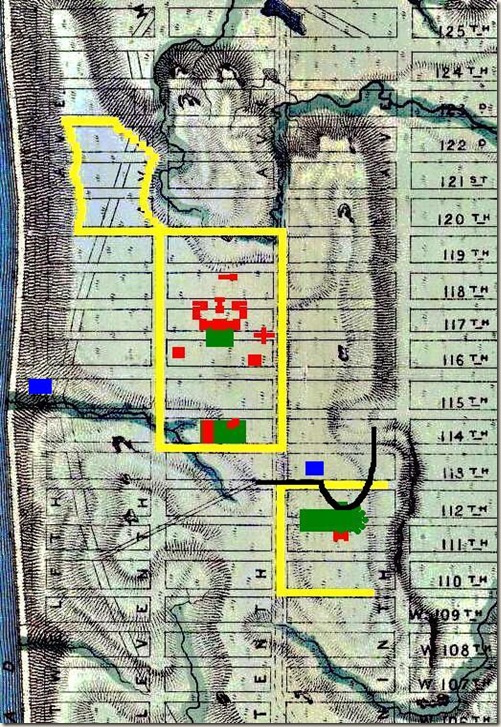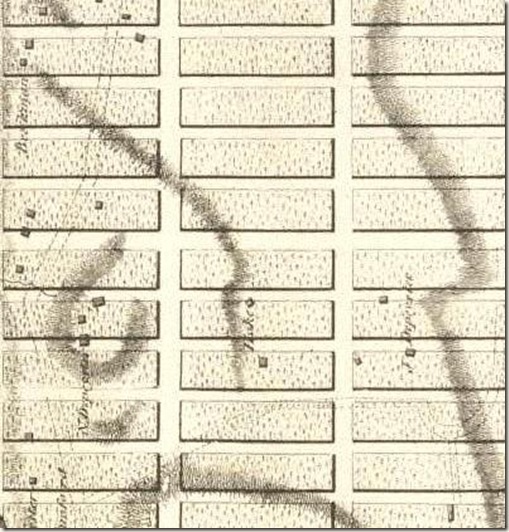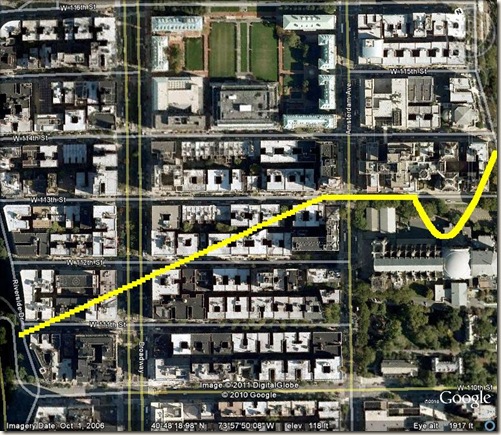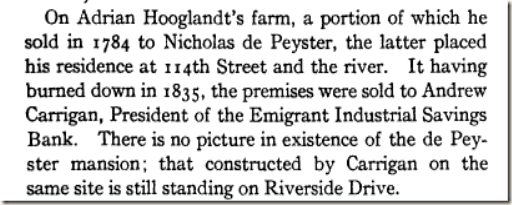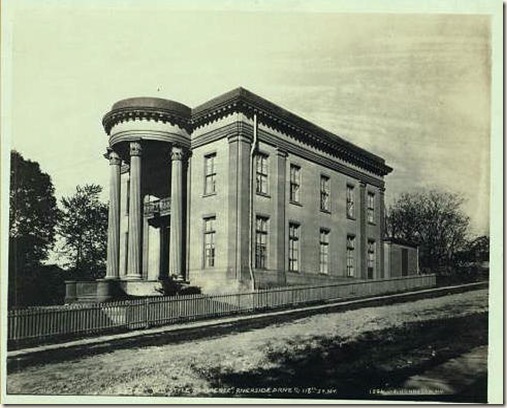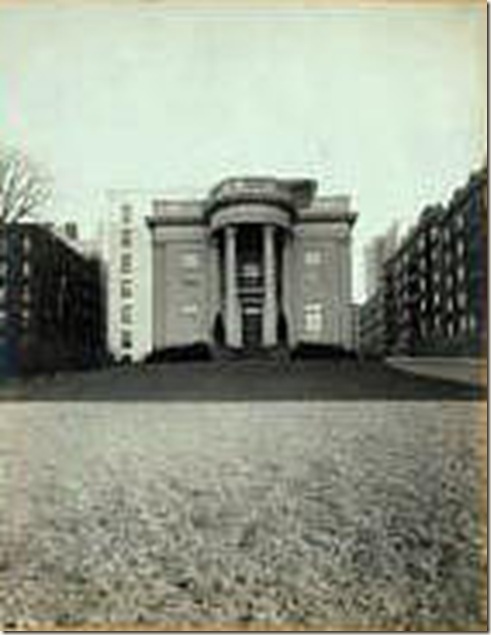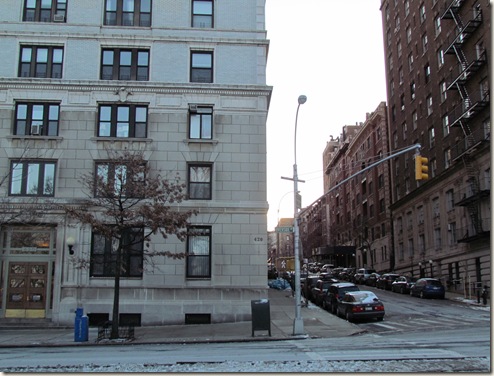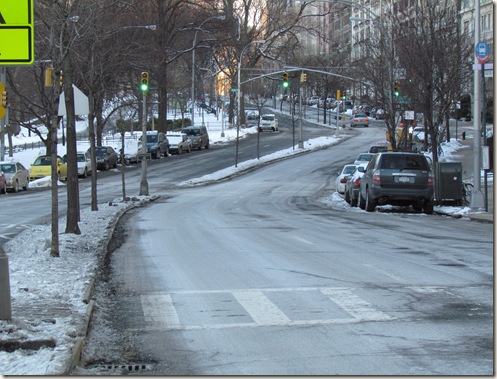But what’s particularly interesting is that this is Broadway; and Broadway between Madison and Herald Squares—one would think such an area would be high-end residential and/or retail shopping. Think again; this is the current elephant in the room of Manhattan real estate.

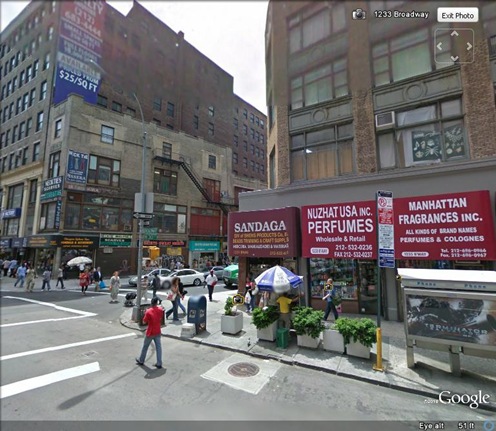

And indeed, this is the undistinguished heart of Manhattan’s newest acronym neighborhood NoMad (NOrth of MADison Square), a name suggested as far back as 1991! But what’s integral to people using a new name for a neighborhood is that people actually go there, and that’s what’s happening now.
This section of Broadway has a fascinating history as an “other side of the tracks” kind of divide. In the Gilded Age of the 1880s and 90s, Fifth Avenue and Broadway were lined with fine hotels, theaters and restaurants. And literally across Broadway was the old Haymarket, the most notorious dance hall/brothel in the Tenderloin.
The Tenderloin was a riotous red light district that flourished for some 40 years in between the Civil War and WWI. The boundaries vary wildly from source to source, and there were viable residential communities within its boundaries. But here is how The Encyclopedia of New York City, by Kenneth Jackson, defines the Tenderloin…
A nightclub district in Manhattan during the 1880s, bounded to the north by 42nd Street, to the east by 5th Avenue, to the south by 24th Street, and to the west by 7th Avenue. The name refers to extortion payments made to the police by legitimate and illegitimate businesses in the area during the heyday of Tammany Hall. Known as Satan’s Circus by reformers, the district contained the greatest concentration of saloons, brothels, gambling parlors, dance halls, and “clip joints” in the city. It is now the site of the Empire State Building, the garment district, and Herald Square.Below are those boundaries in yellow, along with the boundaries of today’s NoMad, in green. The Haymarket, which we’ll get to in a bit, is the red dot in the uppermost left corner of NoMad.
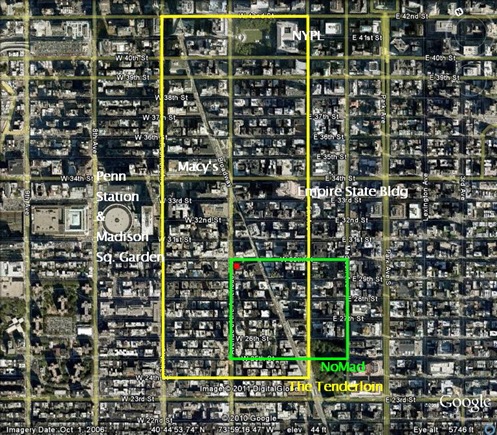
A central feature of both the Tenderloin and Nomad is Broadway slicing its way from Madison to Herald Squares. During the Tenderloin days this was the heart of the theater district with upscale hotels and restaurants extending up and down Broadway. Though none of the theaters exist today (as far as I can determine), many of the old hotels do! Perhaps the most handsomely restored is the Gilsey House, on the northeast corner of 29th and Broadway.
The Gilsey House was one of the first hotels to come to the area. Built between 1869-71, it was a favorite haunt of Oscar Wilde and Diamond “Jim” Brady. Today it’s a co-op (a rare example of high end residential in the neighborhood). And yes, this is the exact same spot as the pictures above!
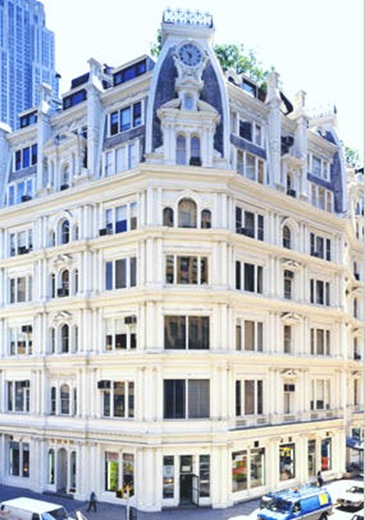
Courtesy of Business Conservation Associates, Inc.
But the recent pioneer to the neighborhood, and what’s giving NoMad traction, is the Ace Hotel. In 2009 the Ace Hotel took over the old Breslin Hotel, which went up in 1904 on the southeast corner of 29th and Broadway, across the street from the Gilsey House.
Here they are, in the midst of the garment accessory, perfume and hair district. The vantage point is looking west east towards Broadway on 29th Street. in the 1880s and 90s this street in particular was known for its brothels; the Haymarket was one block north.
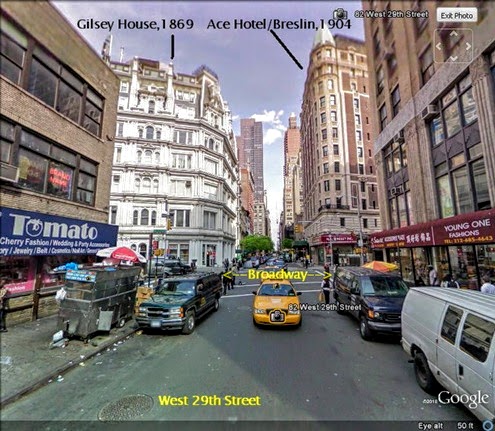
The Breslin Hotel, and indeed the entire district, went through an 80 year rough patch from which it’s only now starting to recover. Though a fine hotel when it opened, the Breslin deteriorated into a welfare hotel and low income apartment rentals before the Ace took over. The first thing any new acronym neighborhood must do is establish good restaurants, which the Ace has done with the John Dory (now one of the city’s top oyster bars), and the Breslin Bar and Grill. And new restaurants seem to be opening up in the area every week. The Eventi Hotel recently opened on 30th Street and 6th Avenue (across from the Haymarket); and over on Fifth Avenue this stretch is once again hopping with new high-end eateries.
During the Tenderloin days, though, brothels and saloons with names like the Star and Garter, Buckingham Palace, the Bohemia, the Tivoli, and Old Alhambra were clustered down side streets west of Broadway. According to Luc Sante’s engrossing Low Life,
As time went by the area became stratified: Twenty-ninth was the street of whorehouses, Twenty-eighth stood for high-end gambling, and Twenty-seventh for the low end. There were saloons on every corner, each with a Ladies’ Entrance, and houses of assignation (meaning, in current parlance, hot-sheet hotels) on every block.And at its center was the Haymarket, the most notorious “dance hall” in the most notorious district. Below is John Sloan’s painting, The Haymarket from 1907, in its waning years. The entrance was on the east side of 6th Avenue, south of 30th Street. The elevated train ran just overhead.

The Haymarket, John Sloan, 1907
And the Haymarket was, like the Tenderloin, in the middle of everything. The map below breaks down the immediate vicinity.
The short gray line at the bottom shows the southern boundary of the Tenderloin on 23rd Street (below it was Chelsea to the left with the Ladies’ Mile Shopping district directly beneath). The extensive purple lines at the left show Hell’s Kitchen, bordering 8th Avenue (much of it is considered Chelsea today). There was a viable African American district, indicated by the green lines, that straddled 7th Avenue, half in/half out of the Tenderloin. This was the African American community that staked out Harlem in the 1910s when Penn Station was built and they had to re-locate. The blue lines show the heaviest concentration of brothels, saloons and gambling halls, all west of Broadway. The yellow lines show Fifth Avenue and Broadway, which were ritzy streets of theaters, fine hotels and shopping. The single, slanted red line was the Haymarket—smack in the middle. The Gilsey House and the Breslin (Ace) Hotels are the pink dots, on the east side of Broadway.

During the Tenderloin years Madison Square was the height of society on a global scale. Here’s the opening page of a booklet from 1894, A Historical Sketch of Madison Square, by Morris Benjamin. It describes the area, which was a mere 7-10 minute walk from the Tenderloin and the Haymarket. (An important note, between 1890-97 the Haymarket had changed hands and for a while was, of all things, a museum.)
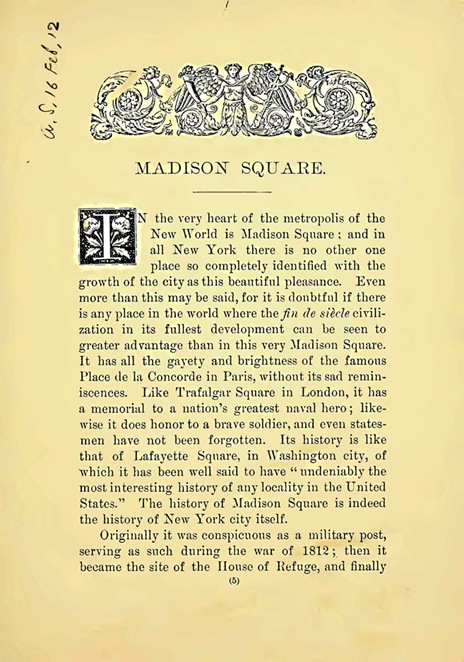
But aside from the 7 year respite, the Haymarket dance hall lasted from 1873 until 1911. By all accounts the Haymarket was on 6th Avenue, but I found this otherwise dry write-up from the New York Times about the sale of the property. It provides an intriguing piece of information in the second paragraph—the Haymarket’s property line.
March 4, 1911 New York Times.
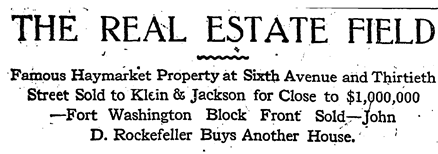
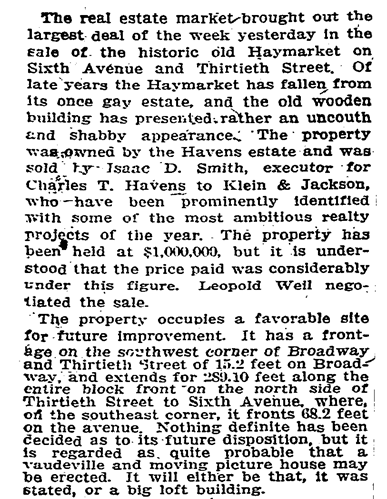
So here’s the the Haymarket with a few other landmarks identified, including the Ace Hotel.
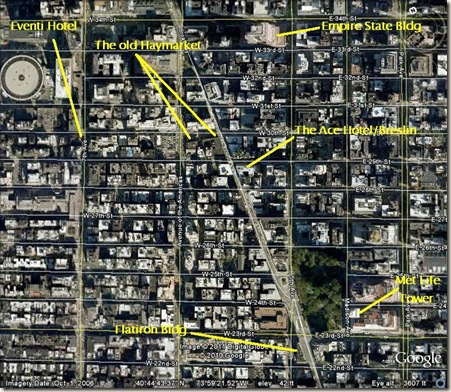
What was striking were the dimensions—not a typical “grid” property with 15’ on Broadway and 68’ feet on 6th Avenue! So of course I Googled it, and there it was…
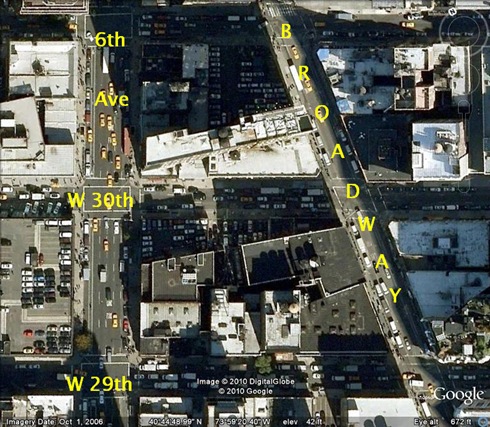
The property line of the old Haymarket is very much discernible today!
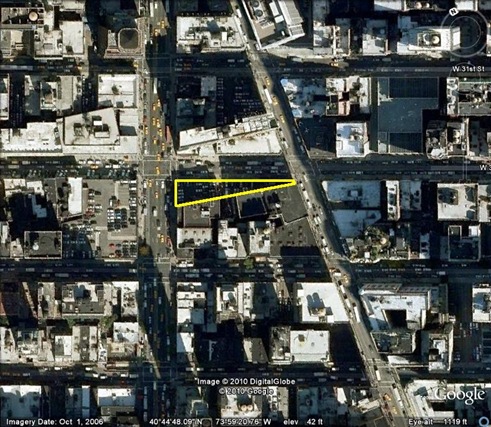
The property seems to be one large parking lot (see all the cars), but the cars near the yellow line are actually on the roof of a one-story building…
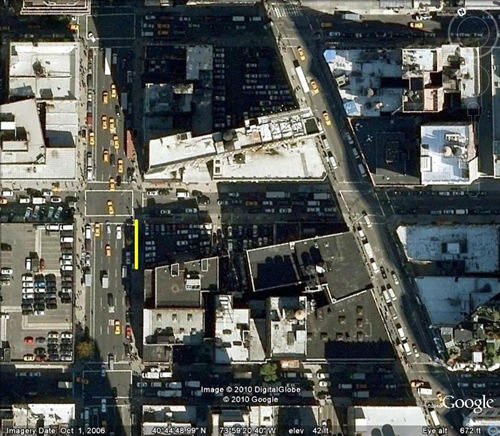
Here’s the southeast corner of 6th Avenue and 30th Street (looking at the yellow line in the above picture). In John Sloan’s painting, the entrance to the Haymarket would have been to the far right, past the tree, at the end of the burgundy awning. The pale patch of wall in the middle of the angled building is the correct height for the Haymarket (three stories), but further research is needed to determine that for sure.
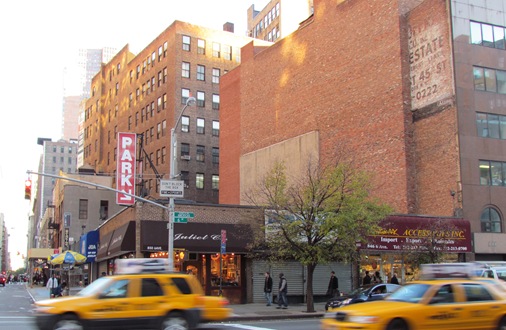
Looking farther along 30th Street towards Broadway. The middle of the block is a ground level parking lot, and would have been the heart of the Haymarket.
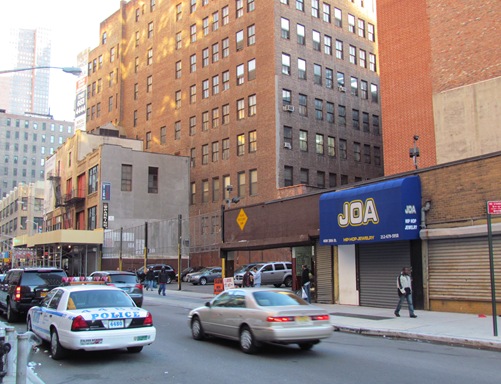
At the end of West 30th Street (Broadway is to the left) this building was not part of the old Haymarket; it’s an industrial building from the 1920s.
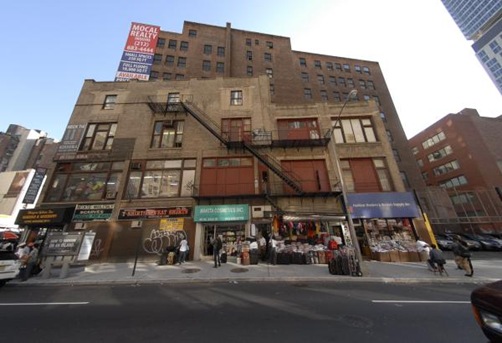 Courtesy of Property Shark
Courtesy of Property SharkOn the Broadway corner showing the 15.2’ side of the Haymarket property (the pointy angle of the yellow triangle a few pictures above). Neckties, Scarves and Corbatas. The tall building on the next block (6th Avenue, facing the entrance of the old Haymarket) is the new Eventi Hotel.
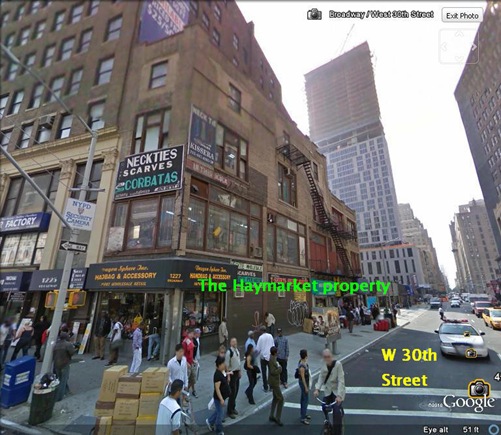
Panning to the left you can see the Ace Hotel (the old Breslin) and the Gilsey House were just a block away on Broadway. Broadway was literally the dividing line between these two parts of town! The Haymarket was full of pickpockets, con artists and gangsters preying on out-of-towners. It was so well known that if you were visiting New York you went there just so you could tell your friends back home. I suppose the proximity of the two parts of town made sense in the days before subways and yellow cabs.
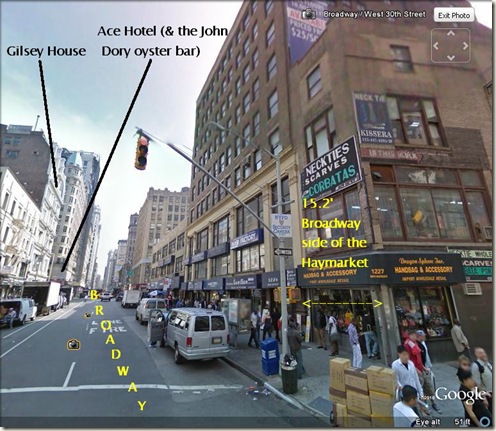
Here’s a New York Times piece from February 15, 1920 that sheds more light on the Haymarket and the property’s history.


Now another fascinating tidbit. You might have noticed that the buildings across the street from the Haymarket are angled at the same orientation! Usually angled buildings are indicative of old roads, but when they match each other on opposite sides of a street, that’s a pretty good sign of one.
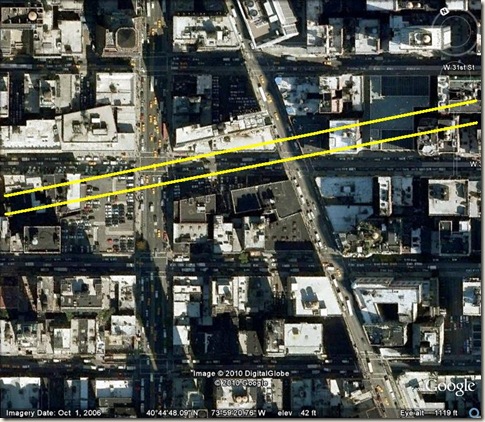
Just to show the angle at street level, here’s West 30th Street across from the Haymarket…
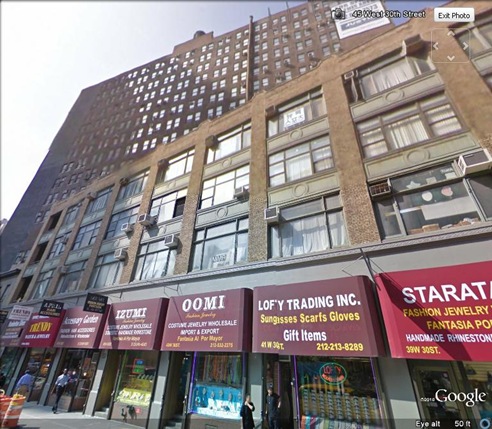
So now I was on the hunt for an old road, long before the days of NoMad and the Tenderloin. I found this description of a Stewart Street from As You Pass By, by Kenneth Dunshee:
Stewart Street formerly ran from Broadway between 30th and 31st Sts. southwesterly to a point in the block bounded by 6th Ave. and 7th Ave., 28th and 29th Sts.And here’s what such a street might look like on the Viele map (in bright green), with the Haymarket in red.
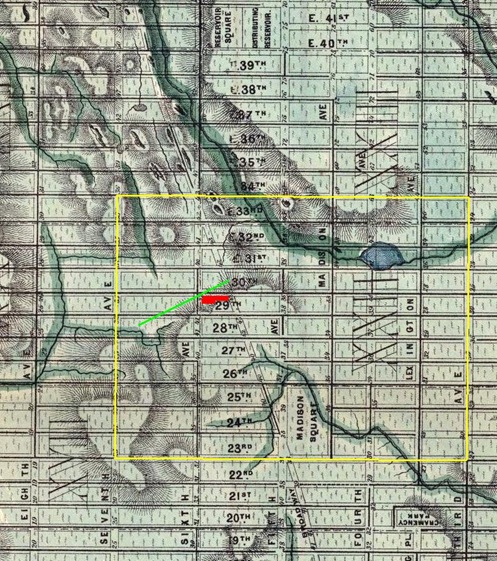
The yellow boundaries above are neither the Tenderloin nor NoMad but a proposed military training ground. Back in the early 1800s, when Stewart Street existed, the Commissioner’s Plan of 1811 had laid out the area above as a Parade Ground for the military (we were preparing for the War of 1812). It extended from 3rd to 7th Avenues, 23rd to 34th Streets. It would not, however, come to fruition.
Just for reference, here’s what the parade ground would look like on today’s grid; a central park before Central Park.
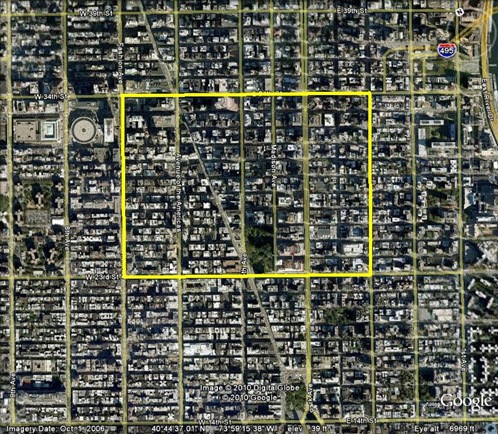
If you read the post Why the West Side is Different it explains a lot about the uptown roads leaving from Madison Square. Here they are on the Viele map (in blue as a schematic). From left to right the four roads are: the Bloomingdale Road (which became Broadway), Albany Avenue, the Middle Road, and the Boston Post Road (notice how the two roads to the right went around either side of Sunfish Pond. The stream leading from Sunfish Pond still floods the deep basement of the Empire State Building today!).
Stewart Street appears to have led from Chelsea (and probably the old Fitzroy Road) and connected to the Bloomingdale Road!
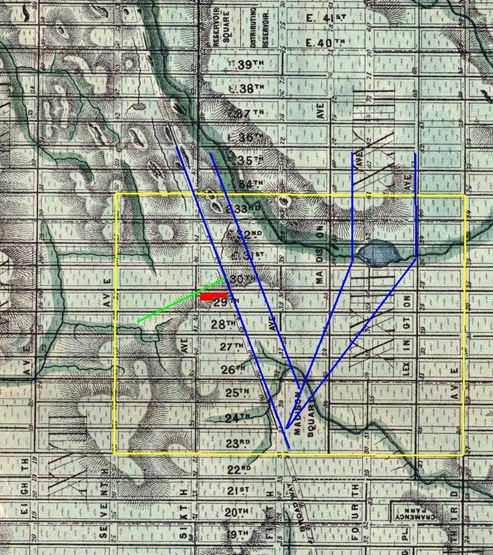
Stewart Street followed the low ground (see the hash marks just south of it?). And according to the Times article above the old Haymarket started out life in the 1830s as a bath house, which would make sense as it was at the bottom of a hill--you wouldn’t want to lug water up a hill in the days before plumbing!
It’s amazing how an area changes over time. Later on, the area immediately to the west of that high volume traffic area would become the Tenderloin. And though the Tenderloin was huge, the heart of it, and the Haymarket, seem to have left a residential and commercial hole right in the middle of the city. It's like the urban environment has a memory all its own. Finally on the verge of an upswing, NoMad is reclaiming that most notorious part of that most notorious district.
Pretty riveting stuff.
Here's some Google Earth art.

